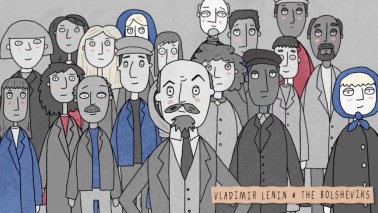The lunatics were once in charge of the asylum. The first six directors of the National Gallery were all artists: before art history became an academic discipline, artists were the leading authorities on art.
Founded more as a teaching resource than a visitor attraction, until the mid-1940s the gallery was reserved for artists two days a week, when other visitors had to pay for entry. This stopped them getting in the way of artists copying from the masters, an essential part of an art education in the days before cheap colour reproduction.
There’s something of the altarpiece in this image of an artist’s progenitors flanking a touchstone for his art
It’s rare to see artists copying in the galleries now that they are so jam-packed with tourists. As long ago as 1980, David Hockney wrote to the then director Michael Levey asking permission to copy a Van Gogh in the basement, as to be ‘stood in the N.G. every morning would be hard for me – people would natter to me’. Copying, he argued, was ‘a marvellous way to learn, it was good enough for Degas, Van Gogh and almost everybody else before 1920’.
The request was part of a correspondence about his 1981 Artist’s Eye exhibition, the fifth in a series designed to take the institution back to its roots by inviting living artists to hang a selection of their own works alongside favourite paintings from the collection. Hockney’s selection was decided in advance. Four years earlier he had painted a portrait of his friend Henry Geldzahler, curator of contemporary art at the Met, studying reproductions of four of the artist’s favourite National Gallery paintings taped to a screen in his studio. Titled ‘Looking at Pictures on a Screen’ (1977), the work testified to Hockney’s belief in the power of great painting of all periods to continue to ‘give off a lot of its magic’ even in reproduction.







Comments
Join the debate for just £1 a month
Be part of the conversation with other Spectator readers by getting your first three months for £3.
UNLOCK ACCESS Just £1 a monthAlready a subscriber? Log in